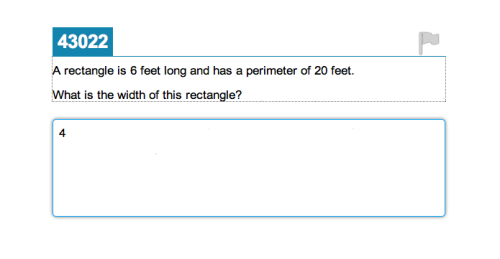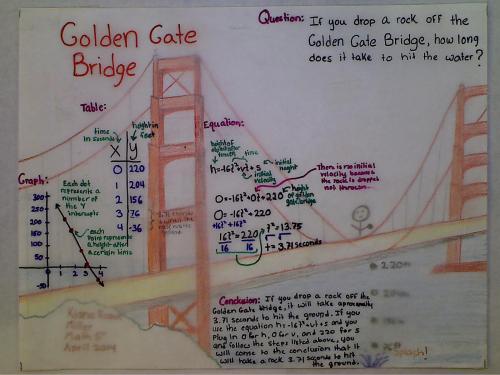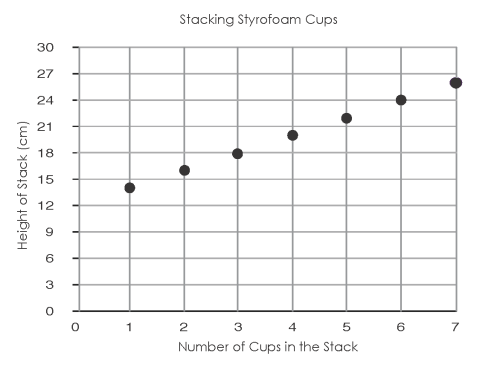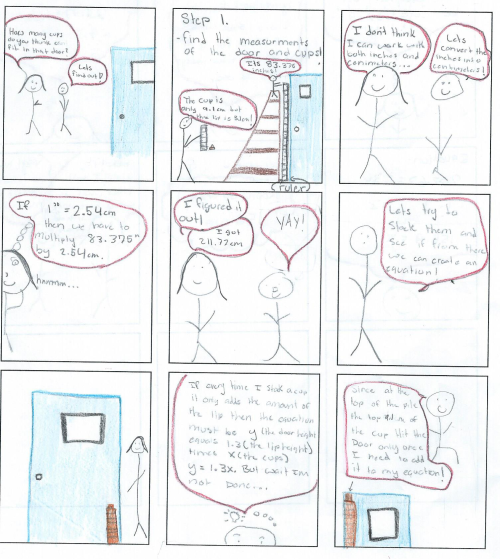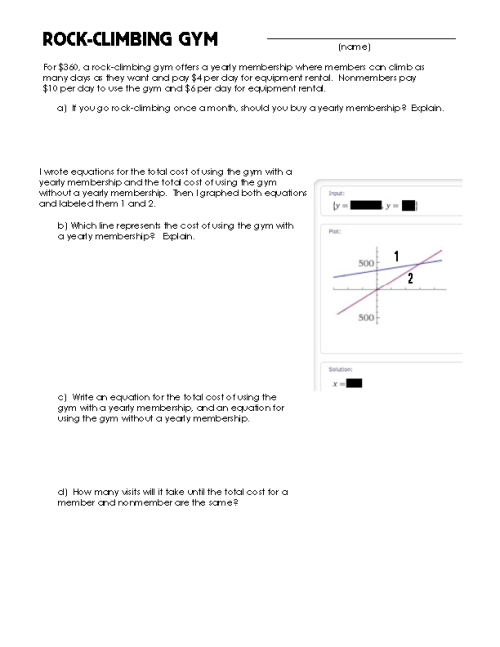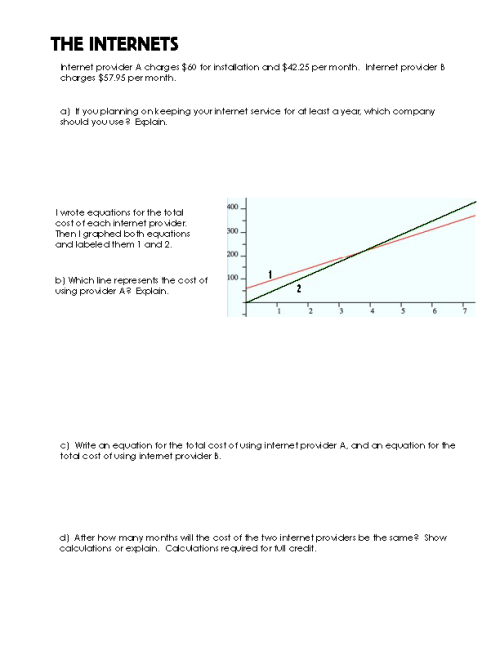The Overview:
This year I wanted to do Kyle Pearce’s Detention Buyout Program that Dan had highlighted in his Great Classroom Action series. The problem was that in my new school we don’t have detentions, so I didn’t think I would get much buy-in from the students. But there is something that all schools definitely do have: Missing assignments! So I created three “deals” that would allow students to pay me money in exchange for getting credit for an assignment they missed.
I used this assignment as an introduction to inequalities, but I also wanted to link the Missing Assignment Buyout Program to the linear equations we just finished covering. That is the why as you look at this assignment, you will see a focus on connecting the information in the graphs to the information contained in the inequalities.
I sequenced this by first giving the assignment. Then two days later I did another version of it as an opener / warmup. And then lastly I put another version of it on their test. Each new version offered slight modifications from the previous.
The Description:
I first offer students three possible deals for buying off their missing assignments. I poker face the whole thing and enjoy all the “Is this legal” expressions on their faces. I tell them to make sure they go home and talk to their parents about how much money they have budgeted for such as program. The first question on the worksheet asks them which deal is better for them, so as an added bonus I printed out each students missing assignments and handed it to them. This is that first worksheet:
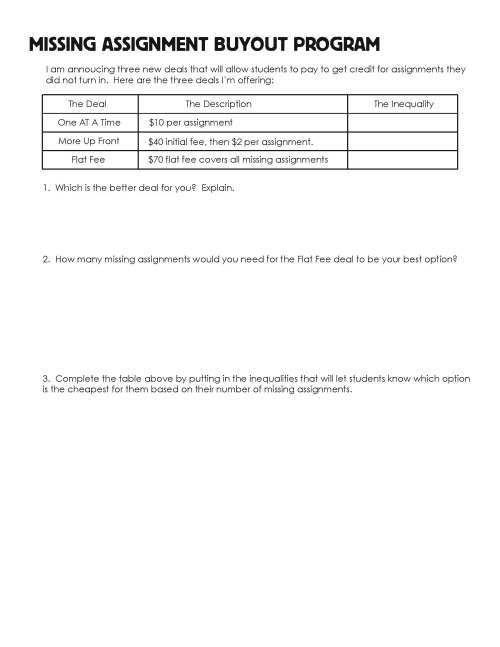
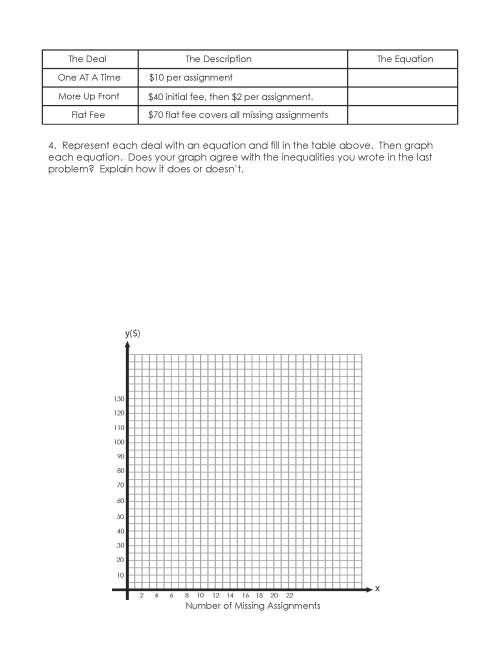
There are a lot of interesting questions and explanations that came out of this first assignment. For instance, having students see that x less than 5 was the same as saying x less than or equal to 4 since x could only take integer values. Also having students see the connection between the intersection points of their graphs and the inequalities they wrote was time well spent.
A couple days later I came back to the Missing Assignment Buyout Program in the form of a opener or warmup question. I handed the students this graph when they came into the room (two graphs per page to save paper):

Then I had students write a description of each deal, as well as the inequality and equation for each deal. This was a slight inversion of the original assignment where I gave them the description and had them write the inequality, equation, and then graph. Now I am giving them the graph and asking them to write the description, inequality, equation. I have them in pairs and am checking homework and taking role while they work. Then I randomly call on pair share partners and fill in the following table that I am projecting on the board:

Lastly to make sure that they really did understand the concept, I put a similar problem to the opener exercise in their inequalities chapter test. The test had a slight twist in a scenario where a student would want to buy the Flat Fee plan based on their number of missing assignments, but based on the money they had to spend, they would need to pick their second best option. Here’s that problem:
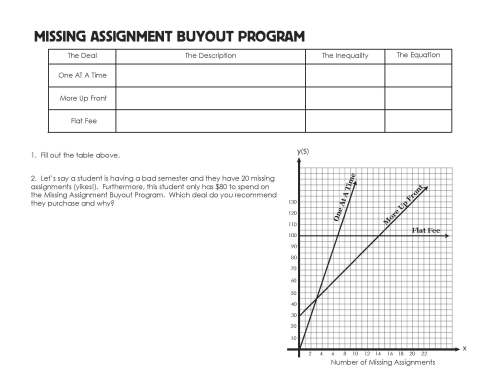
I initially thought having them graph each deal was kind of an unnatural excercise, because why would someone ever graph something like that? But I think it ended up working because of how the Opener and Test question both refer to the graph. All in all student engagement was high, even with the graphing portion so I think I’ll keep it next year.
The Extension:
(good idea courtesy of my principal)
Tell the students that you have decided to only offer one deal to the whole class, and they have to decide which deal they want for the class. This could open up a nice debate about fairness and equity – this deal is best for you since you don’t have any missing assignments, but what about these other students? Connect this debate to something current, like Obamacare. Discuss how math influences decisions and that often decision makers have to make decisions based on their believe on the greater good, even when the numbers indicate that some people will be negatively affected by the decision.
The Goods:
MissingAssignmentBuyoutProgram
MissingAssignmentBuybackProgramOpener
MissingAssignmentBuybackProgramTest
 Now all of a sudden my answer doesn’t seem sufficient anymore 😦 Here’s my best guess at a popular student answer:
Now all of a sudden my answer doesn’t seem sufficient anymore 😦 Here’s my best guess at a popular student answer:
